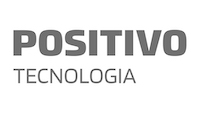OVF 2.0 FAQ
- What is OVF?
- What are the benefits of OVF? Why is it important?
- What are the new improvements/features of OVF 2.0 vs. OVF 1.0?
- How is OVF related to CIMI?
- When was OVF 2.0 released?
- Where can I find the OVF 2.0 specification?
- How is work completed on OVF?
- How can I participate in the development of OVF?
What is OVF?
DMTF’s Open Virtualization Format (OVF) is a packaging standard designed to address the portability and deployment of physical machines, virtual machines and appliances. OVF enables the packaging and secure distribution of virtual machines or appliances, providing cross-platform portability and simplified deployment across multiple platforms including cloud environments. Using OVF, independent software vendors (ISVs) can create single, pre-packaged appliances and providers can export and import virtual machines that can run across different virtualization platforms.
The standard, originally released in 2009, has provided the industry with a standard packaging format for virtual machines – solving a critical business need for software vendors and cloud service providers. It achieved international recognition as an International Standard by ISO/IEC in 2011.
What are the benefits of OVF? Why is it important?
OVF describes an open, secure, portable, efficient and extensible format for the packaging and distribution of virtual appliances. The key features and benefits of the format are:
- Portable VM packaging
- Optimized for secure distribution
- Simplified installation and deployment
- Supports both VM and multi-VM configurations
- Vendor and platform independent
- Extensible
- Localizable
For additional information on each benefit, read the OVF Overview Document.
What are the new improvements/features of OVF 2.0 vs. OVF 1.0?
OVF 1.0 has provided the industry with a standard packaging format for virtual machines – solving a critical business need for software vendors and cloud service providers. OVF 1.0 has been widely adopted to meet this need and is now an international standard (adopted by ISO/IEC in 2011).
OVF 2.0 brings an enhanced set of capabilities to the packaging of virtual machines, making the standard applicable to a broader range of cloud use cases that are emerging as the industry enters the cloud era. The most significant improvements include support for network configuration along with the ability to encrypt the package to ensure safe delivery.
New features of OVF 2.0 include:
- Improved support for network configuration
- Package encryption for safe delivery
- Scaling and deployment options
- Support for basic placement policies, including affinity and availability placement
- Shared disks
- Advanced device boot order
- Advanced mechanisms for passing data to guest
- Updated CIM schemas
How is OVF related to CIMI?
OVF is an important foundation for DMTF’s cloud standards development, specifically in relation to the Cloud Infrastructure Management Interface (CIMI) specification. For example, CIMI allows the import of an OVF package to create multiple CIMI resources.
When was OVF 2.0 released?
OVF 2.0 was released in January 2013.
Where can I find the OVF 2.0 specification?
The OVF 2.0 specification, previous versions of the OVF specification and OVF tutorials can be found at http://dmtf.org/standards/ovf.
How is work completed on OVF?
Advancements in the OVF specification are handled by DMTF’s System Virtualization, Partitioning, and Clustering Working Group (SVPC WG). This working group creates standards for managing virtualized environments, managing the lifecycle of a virtual computer system, discovering inventory virtual computer systems and monitoring virtual systems for health and performance. The SVPC WG contributes to DMTF’s overall Cloud Management Initiative.
How can I participate in the development of OVF?
If you are interested in contributing to OVF and the future of distributed management, DMTF members can sign-up on the SVPC Working Group page by clicking “Join group” at the top of the page.
Non-members can participate in this working group by joining DMTF. Visit the Join Us section of the DMTF website for more information.








